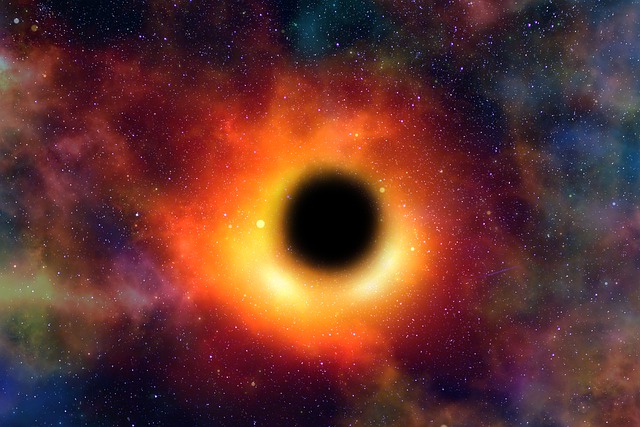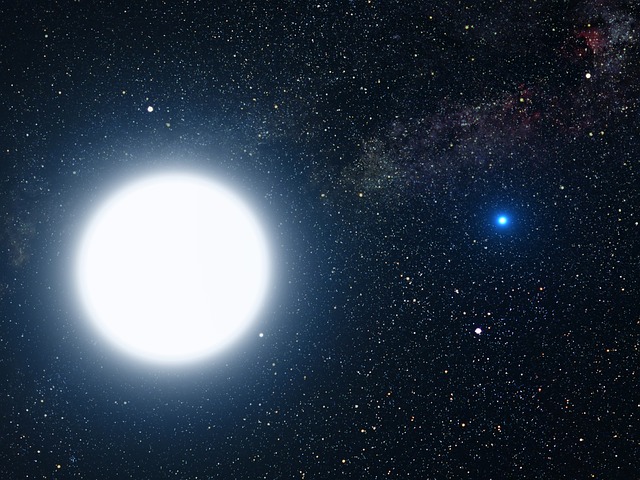*This post may contain affiliate links. This means we may make a commission if you purchase an item using one of our links*
Stars run on a limited amount of resources, and once they run out of fuel, they will start to die. The most massive of these stars will collapse into black holes or explode their outer layers in a supernova. This process can occur in as little as one-tenth of a second and results in one of the most mysterious occurrences in the Universe.
Continue reading to discover how many stars become black holes, why not all black holes are created from stellar masses, and how a black hole could be destroyed.
How Often Do Stars Become Black Holes?
Table of Contents

Black holes are areas of space where the force of gravity is so strong that not even light can escape. This intense gravity is caused by an extremely high concentration of mass in a small area, which can happen at the end of a star’s life.
Black holes are invisible since not even light escapes; therefore, the only way for scientists to “see” black holes is to observe the matter around them.
Black holes vary in size but come in three main types determined by mass and size. A primordial black hole is the smallest type of black hole, with the mass of a large mountain condensed to the size of a single atom.
The largest black holes are known as supermassive black holes and have a mass greater than the combination of one million suns. Research suggests that every galaxy has one of these supermassive entities at its center, which likely formed at the same time as the galaxy itself.
However, the most common type of black hole is the stellar black hole, which forms when a dying star collapses in on itself. These black holes have a mass about 20 times greater than a sun but can fit inside a sphere with a diameter of roughly 10 miles. This type of black hole exists throughout the galaxy, and there are likely dozens within our own galaxy, the Milky Way.
There are so many black holes in the Universe that trying to count them would be like trying to count the number of sand grains on a beach. Still, thanks to the enormity of the Universe, none of these black holes are close enough to Earth to pose a threat.
Stellar black holes form from massive stars which terminate their lives with a supernova explosion – around one in every thousand stars possesses enough mass to become a black hole. That might not sound like a lot until you put it into context with the vast quantity of stars in the Universe.
Scientists estimate that there are roughly 100 billion stars in the Milky Way alone. By these calculations, our galaxy would house 100 million stars with enough mass to transform into black holes one day. The Universe could contain 100 billion galaxies, each with 100 million stellar-mass black holes. So every single second, somewhere in the Universe, a new black hole is formed.
However, our Sun doesn’t possess the minimum mass needed to collapse into a black hole. When the Sun does run out of fuel (in billions of years), it will transform into a red giant by expanding its outer layers.
How Long Does It Take For A Star to Become A Black Hole?
Black holes can form in a matter of seconds or millions of years, depending on their type and process.
A stellar-mass black hole generally forms in one of two ways. When a massive star burns the remainder of its fuel, it will collapse in on itself. When this happens, the star may collapse directly into a black hole or explode into a supernova.
The former could happen in as little as a tenth of a second; still, a supernova can also transform into a black hole in as little as half a second.
If a star explodes into a supernova, the star’s energy may be too low to form a black hole until some of the stellar mass falls back onto the core.
In contrast, some black holes can take millions of years to form. This happens when a neutron star gradually accretes mass over time. This mass can come from a nearby star or involve the merging of a companion star. The material continues to accrete until the neutron star is pushed to its limit and collapses into a black hole.
Are Black Holes Formed By Dying Stars?

Some black holes are formed by dying stars, while others are created during the birth of a galaxy.
A stellar black hole forms from a dying star when the center of these massive celestial bodies collapse in on themselves. Scientists call this collapse a supernova or star explosion, during which part of the star blasts out into space.
Every star dies eventually because it has a limited supply of resources. Once its core runs out of hydrogen fuel, there is nothing left to burn, so the star begins to die. While many stars quietly fade away as red giants or red supergiants, others explode in a massive supernova, which can birth new stars or create a black hole.
Massive stars may not die when their hydrogen supply runs out because they are hot enough to fuse heavier elements, including helium and carbon. Still, no fuel will remain at some point, and the star will collapse on itself. These stars can collapse directly into a black hole or explode the outer layers to become neutron stars.
Can A Black Hole Be Destroyed?
The gravity of a black hole is so strong that nothing – including light – can escape. For a long time, this led scientists to believe that black holes were impossible to destroy, but that might not be the case.
A theory proposed by physicist Stephen Hawking suggests that while black holes expand by absorbing material that crosses their event horizon, they also lose small amounts of energy through “Hawking radiation.” This means they do shrink over time.
The reason why Hawking radiation occurs is that “space” is not really empty. Instead, it’s full of particles that pop into and out of existence. If a pair of these particles pop into existence near a black hole, one may be dragged in while the other escapes. And the energy for this process comes from the black hole itself.
This process means that black holes slowly lose mass and energy and will eventually evaporate through Hawking radiation. Still, this process will take longer than our Universe’s entire existence. So it’s unlikely that anything will “destroy” a black hole in the near future.
Summary
Stellar black holes are created from massive stars that run out of gas and collapse in on themselves. Of the trillions of stars within the Universe, around one in every thousand possesses enough mass to create a black hole. Still, when they do, it is a spectacular process that can happen in less than a second.
References
What Is a Black Hole? | NASA
HubbleSite: Black Holes: Gravity’s Relentless Pull interactive: Encyclopedia (stsci.edu)
Chandra :: Resources :: Q&A: Black Holes (harvard.edu)
10 Questions You Might Have About Black Holes – NASA Solar System Exploration

